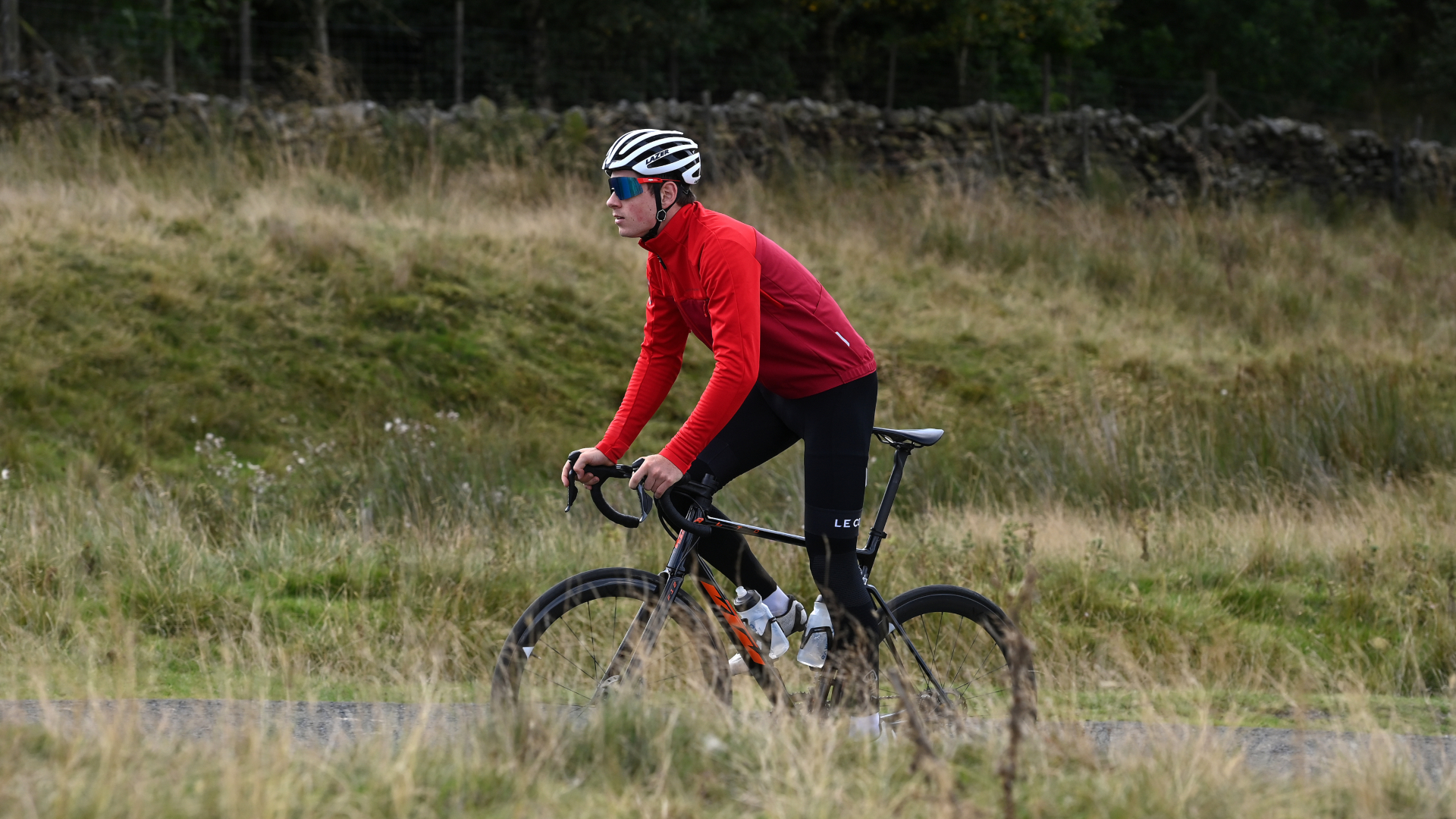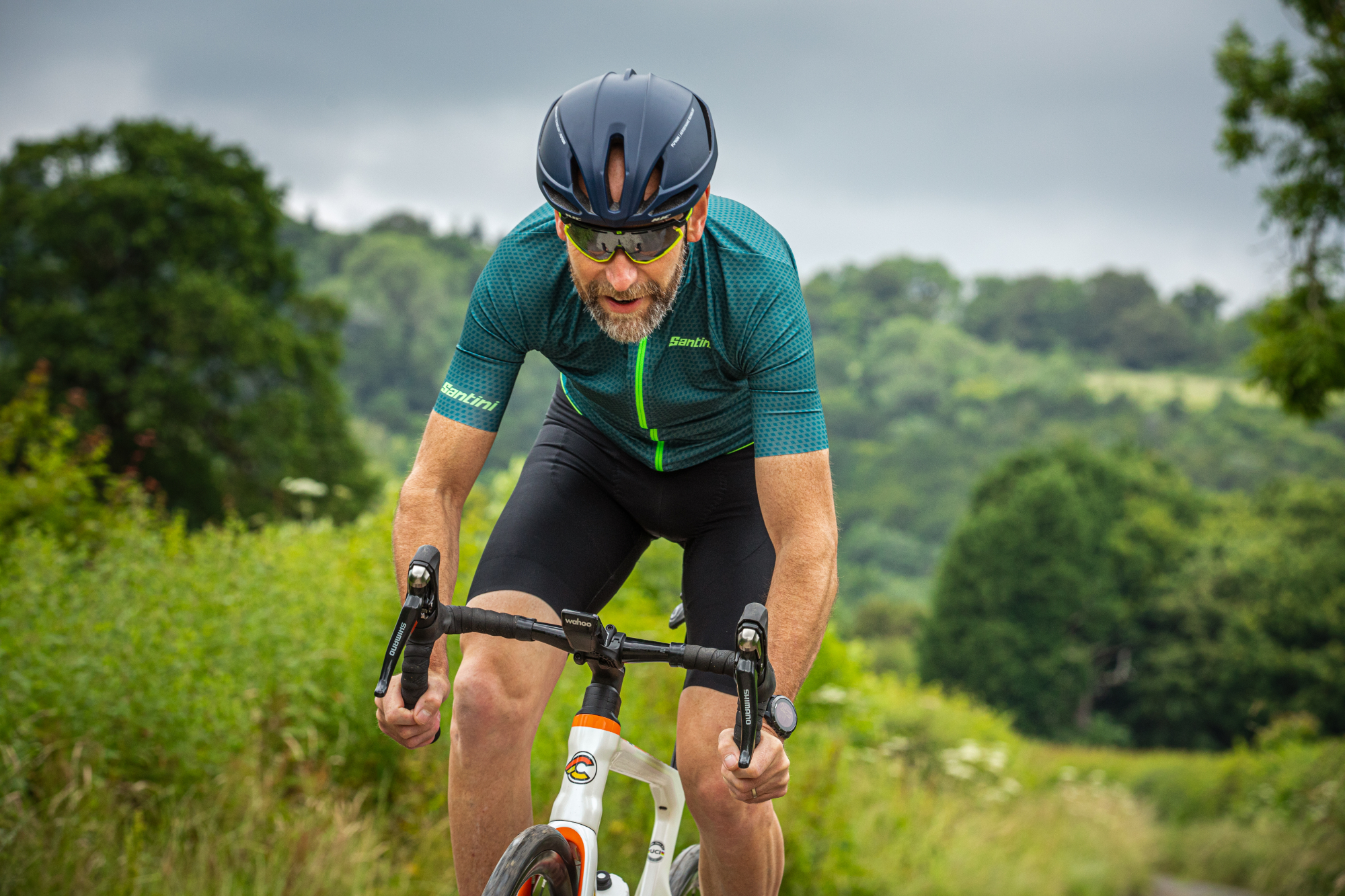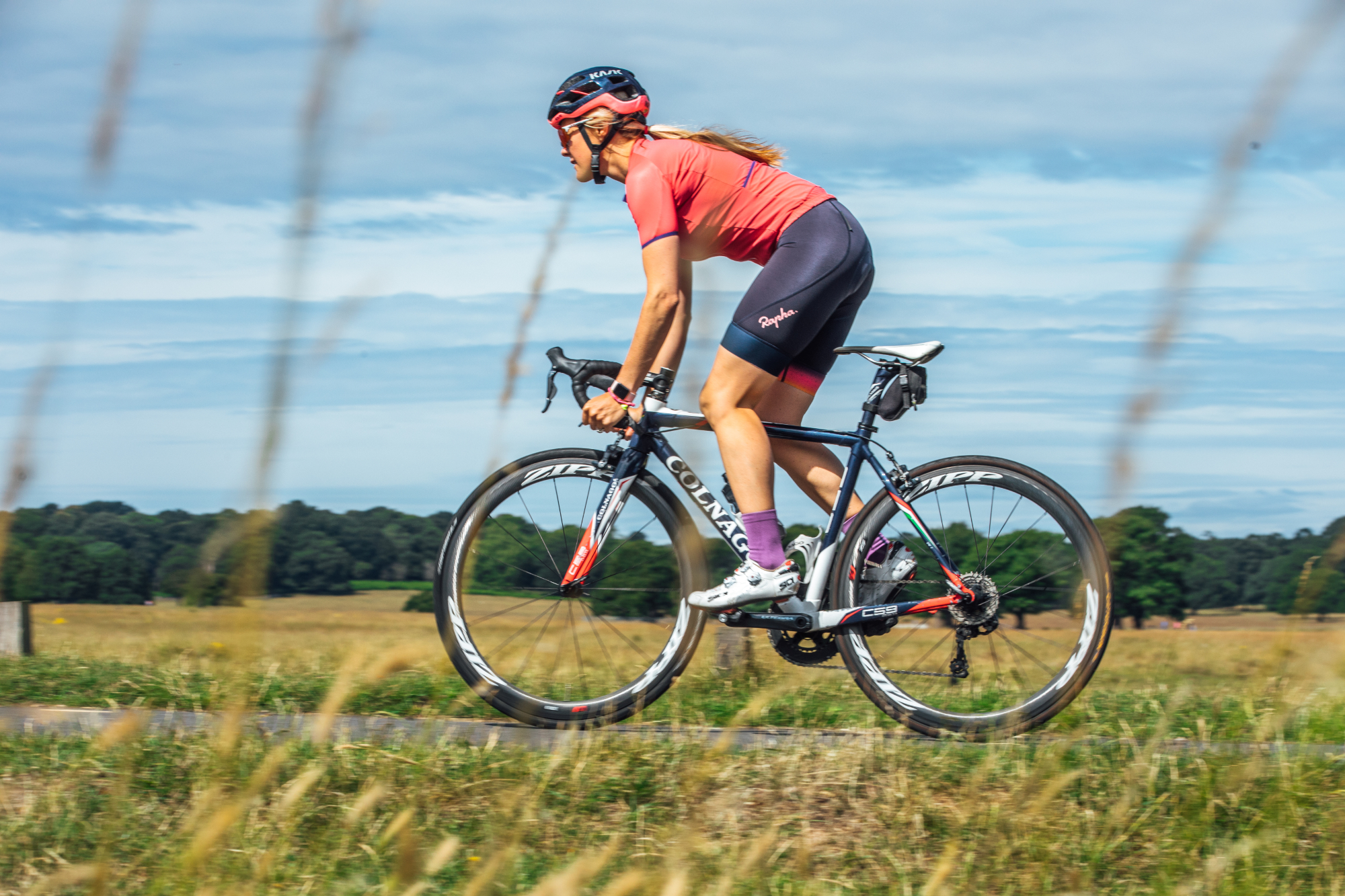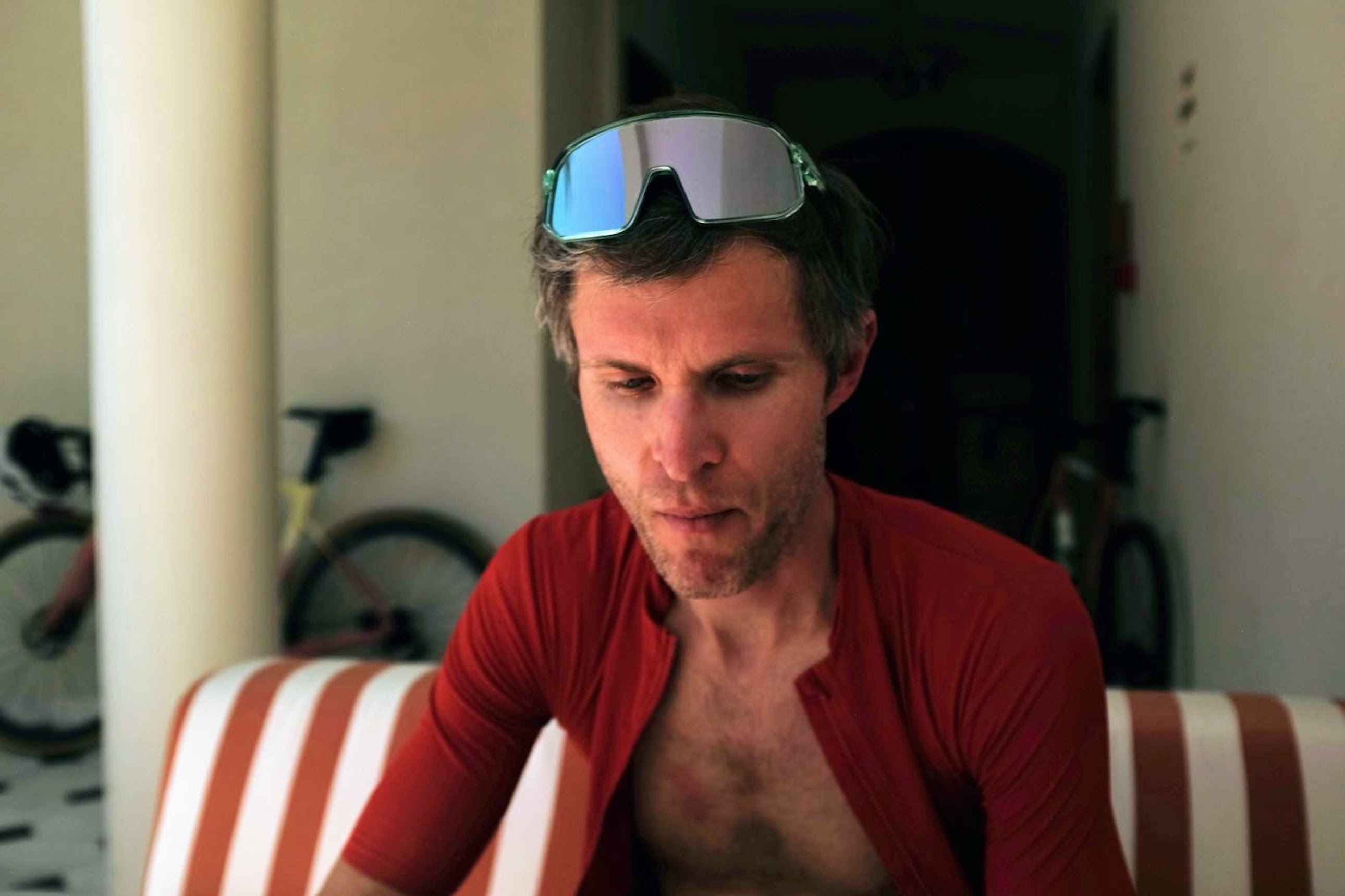Can you push your heart too hard?
Provoked by a cardiac glitch of his own Cycling Weekly magazine fitness editor, David Bradford, takes a deep dive into endurance sport and heart health


It’s common knowledge that exercise is good for the heart. But does this apply equally to everyone who keeps fit, regardless of the volume of training? Sadly not. Many doctors and scientists now believe that, as far as the heart is concerned, there may be such a thing as too much.
I have a personal interest in this subject: since 2014, my heart has been misbehaving during exercise, leaping to rates as high as 230bpm, usually early on during a ride or run, often refusing to fall until I stop or slow down. It happens frequently, though usually settles into its normal rhythm within about 10 minutes. I’ve undergone many tests but so far with no firm diagnosis. My background: I’m 40, have been running and cycling for about 15 years, and until recently racked up seven to 10 hours, including two or three hard sessions, nearly every week. Could it be that I’ve overdone it and damaged my heart?
Evidence that endurance exercise can damage the heart has been mounting for years, and much of it is cited in an excellent book from across the pond, The Haywire Heart, co-written by journalist Chris Chase, heart doctor John Mandrola and former pro cyclist Lennard Zinn. The book’s introduction highlights that it is very difficult to establish definitive conclusions about the long-term effects of exercise among athletes. For example, a 2011 study observed that among 834 former Tour de France riders average longevity was 17 per cent higher than in the general population. This may seem reassuring, but it cannot be ruled out that these riders were innately invulnerable to the ardours of high-volume training — a likely characteristic among pro cyclists. Non-elites like me may need to be more cautious.
The most common form of heart rhythm problem is atrial fibrillation (AF), where the top chambers of the heart (atria) intermittently contract too fast — thankfully the heart’s AV node acts like an electronic resistor and prevents the lower chambers (ventricles) from joining in the chaos. A 2009 meta-analysis of six case-controlled studies on athletes concluded that being an endurance athlete makes you five times more likely to develop AF — one in four of us ends up with the condition. Men are considerably more prone to arrhythmia than women — exactly why is unclear — and tall men are the most susceptible of all. The biggest concern about AF is that it increases stroke risk, as fibrillating atria do not contract or empty fully, which can allow blood clots to form. Of course, stroke risk is also influenced by a whole host of other factors (high blood pressure, diabetes, etc.) — many of which are mitigated by regular exercise.
The question is, how best to balance the risks and benefits of cycling, and exercise more generally?
Are cyclists prone to heart problems?

One thing’s for certain with heart rhythm problems: prevention is very much better than cure. Once you have a condition such as AF, it is unlikely to resolve itself, as Michael Papadakis, a specialist in sports cardiology at St George’s, University of London, explains: “In an athlete who experiences occasional episodes of AF and continues to exercise at the same intensity, it is likely that the frequency of the episodes will increase and eventually the heart will stay most of the time in AF… In most cases we would recommend that they take their foot off the throttle and try and moderate but not stop exercising.”
In other words, developing arrhythmia is likely to force you to seriously cut back your training; far better to make smaller preemptive changes before harm is done.
The latest race content, interviews, features, reviews and expert buying guides, direct to your inbox!
Why are athletes’ hearts more prone to rhythm problems? There is not yet a definitive answer, but AF does not occur in normal hearts: it begins with a trigger, an out-of-sync beat, via an abnormality in the atrial muscle, and there are good grounds for suspecting such abnormalities commonly result from years of endurance exercise. Athletic hearts have to tolerate extremes. In training, heart rate is raised by adrenaline (sympathetic nervous system), while low heart rates are dictated by the vagus nerve (parasympathetic nervous system). Athletes’ hearts experience very high and very low (resting) rates on a daily basis. “This back and forth,” writes John Mandrola, “may create the milieu that triggers premature beats, which could then induce AF.”
Just like a cyclist’s leg muscles, their heart is forced to get stronger, adapt to the demands placed on it, and may sustain inflammation and injury resulting in scarring — studies have observed raised markers of inflammation in endurance athletes. It is known that scarring can disrupt the flow of electrical signals in the heart, creating another potential trigger point for arrhythmic beats. One particular condition is so strongly linked with endurance exercise that it has been named Phidippides cardiomyopathy — after the Greek messenger who, circa 490 BC, died after having run the 26.2 miles from Marathon to Athens. It is thought that this hazardous condition, characterised by patches of cardiac fibrosis (scarring), is caused by prolonged, relatively intense exercise that keeps the heart in a state of volume overload for several hours at a time.
Scarring is not the only risk; it is also understood that endurance exercise can cause the heart muscle to grow larger (hypertrophy), or heart tissue to stretch (dilation). The related structural changes may be implicated in arrhythmia, though this area is not yet fully investigated or understood.
One of the biggest challenges for scientists is trying to separate out exercise-related risk factors from preexisting conditions and factors unrelated to athletic adaptations. Taking up sport after years of heart-unhealthy living, for instance, is unlikely to reverse the damage — if problems ensue, it’s difficult to single out the cause.
“Most studies look at athletes at a particular point in time, e.g. middle age,” explains Papadakis. “It can be difficult to decipher what is due to prolonged exercise and what is due to other life events. The ideal study would assess [markers or heart damage] from adolescence or even childhood over a number of decades, and that’s difficult.” There are many different types of arrhythmia aside from AF, and the most serious types — thankfully rare — affect the larger lower chambers of the heart (ventricles). In cases of ventricular fibrillation (VF), the heart cannot function, resulting in cardiac arrest and, in the worst case scenario, sudden cardiac death (SCD). The most common cause of VF in those aged over 35 is the blockage of an artery caused by heart disease unrelated to exercise; somewhat reassuringly, there is scant evidence linking life-threatening ventricular arrhythmia and endurance exercise. Most cases of sudden death in sport result from an undetected preexisting condition — exercise is the trigger rather than the underlying cause. Here, the challenge is effective screening.
How much exercise is too much?

This is a key question but one that is very difficult to answer. Far more research is needed to establish useful upper limits, but it should not be assumed that the more exercise you do, the healthier you will be; already studies have shown a plateau effect.
“The take-home message from these findings,” writes Mandrola, “is that if health is your goal, you need not exercise more than 30-60 minutes per day.”
There is compelling evidence that racking up year after year of hard training increases the likelihood of heart glitches, as Mandrola explains: “Years of endurance training inevitably cause inflammation, scarring and stretching.
These changes to the fundamental structure of the heart can irrevocably alter how it operates… it becomes easier to see how [such training] probably leads to AF. The fact that detraining often fixes the problem only bolsters this hypothesis.”
This does not mean that everyone who trains hard for years will experience rhythm problems, but it does underscore the importance of avoiding overtraining, heeding warning signs and giving your heart plenty of rest and recovery time, especially as you grow older.
“In our 50s and 60s, we need more rest after hard exertion,” confirms Mandrola. “Ageing muscles are more susceptible to exercise-induced damage and are slower to adapt and repair.”
Back to the doctor
Still pursuing a diagnosis for my own erratic heart, I attend a followup appointment with heart rhythm specialist John Silberbauer. He explains to me that, having been unable to record my irregular rhythm on an ECG, diagnosis is impossible. But there is some good news: because I’ve not had any ominous symptoms and have undergone tests including echocardiogram and MRI, the most serious conditions are ruled out: “Effectively you have been screened.”
Nonetheless, Silberbauer is determined to nail down the cause: “You’re young and this issue doesn’t look like it’s going away. It is well worth diagnosing it, as there is a very good chance of being able to treat and get rid of it.” What’s the most likely diagnosis, I ask. “I would have thought AF or SVT [supraventricular tachycardia], both of which are benign.”
I suggest to Silberbauer that I could try to get hold of an AliveCor app and attempt to capture an ECG of my racing heart while out on a ride or run. He agrees: it’s well worth a try.
Before leaving, I ask Silberbauer his opinion on the link between heart rhythm problems and endurance exercise.
“My own view — though I’ve no hard evidence to support it — is that a proportion of people have a genetic weakness which, if they don’t exercise, lies dormant; whereas, if they take up endurance exercise, the weakness is activated and becomes a problem. Too much of anything is probably a bad thing, but obviously doing some exercise is better than doing none.”

Heart screening: Should you get tested?
Sudden death from cardiac arrest among young athletes is rare, affecting only around one in 50,000. Ninety per cent of victims are male. The commonest cause of sudden cardiac death (SCD) is hypertrophic cardiomyopathy — disease of the heart muscle — most forms of which are detectable by screening. Unfortunately, screening is not routinely carried out in the UK, owing to concerns over high rates of false positives and related cost implications.
However, research published in the British Journal of Cardiology suggests that refining the screening can reduce the need for follow-up investigations by more than 50 per cent, thereby slashing costs by 21 per cent. It has been argued that funds are better spent on defibrillators at sporting venues — potentially life-saving, but only if your cardiac event occurs at an equipped venue. For us cyclists, who spend much of our time riding alone on country lanes in the middle of nowhere, screening is our best bet.
According to Dr Steven Cox, CEO of Cardiac Risk in the Young (CRY), his organisation’s research, led by Professor Sanjay Sharma, has established new international screening guidelines that have slashed the level of false positives to four per cent. “This represents a massive saving for the NHS,” Cox told CW. “Minimising unnecessary tests, especially in the current climate, is very important. However, this lower level of false positives relies on being seen by a trained sports cardiologist who is using the latest criteria.”
His advice for making sure you’re seen by a suitably qualified specialist is to go through the CRY screening programme (testmyheart.org) — free for anyone aged 14 to 35. It is well worth getting tested, says Cox, because one in 300 people have an undiagnosed heart condition that it would be to their benefit to have picked up. “The commonest condition affects at least one in 700 people and can be cured with an ablation procedure… The vast majority of conditions we detect result in lifestyle modifications that do not stop people from competing.”
What about the most serious conditions: what proportion of those are picked up by screening? “The vast majority, about 80 to 90 per cent,” says Cox. “Research has shown a 90 per cent reduction in cardiac deaths as a result of screening.”
For young cyclists, there is clearly a strong case for screening — though some cardiologists remain ambivalent.
“There are two sides to the argument,” says consultant cardiologist Dr Mark Dayer. “I’ve seen people have their life upended by getting tested — being diagnosed is far more likely to complicate than to save your life. Would I get my own children screened? It’s a decision I’m currently agonising over.”
What about screening for older riders, I ask Cox.
“Over the age of 35, standard screening will not discount that there could be other potential causes of, for instance, a heart attack.”
In veteran athletes, the biggest risk factors are not underlying inherited conditions but other forms of heart disease, often lifestyle-related.
“A 40 or 50-year-old is more likely to benefit from other assessments such as exercise testing and a different form of screening that takes into account their lifestyle factors — more than just an ECG.”
So, if you’re over 35, new to endurance sport and/or have any reason to suspect you’re at an increased risk of heart problems, it’s well worth visiting getting checked by a doctor who is clued-up on sports cardiology.
Your experiences
Tim Butt - former first-category racer suffered a cardiac arrest aged just 22
What’s your sporting background?
From age 12 to 18, I swam four mornings per week, and then got into triathlon. I switched to road cycling and did a full road season in 2012 and earned my first-cat race licence that year.
What happened to you?
In spring 2013, I spent some time in Portugal, riding up to 500 miles a week, and came back in May for the divisional champs.
A couple of weeks later, on a rest day, without warning I collapsed at home and had a seizure. I was out for five minutes, not breathing and thrashing around. My mum called an ambulance. As I was wheeled through the doors into A&E, I went into cardiac arrest and for the next 25 minutes didn’t have a pulse. After five defibrillator shocks and drugs, I regained a pulse but was in a coma for two days — I woke up wondering what had happened.
What was the diagnosis?
After lots of tests, they decided it was Long-QT Syndrome. Well trained athletes can have longer than normal QT intervals [period of heart relaxation between beats] — possibly a factor in my case. Six weeks later, I was fitted with a pacemaker and ICD [implantable cardioverter defibrillator], putting an upper and lower limit on my heart rate.
And the advice from doctors?
I was told I could participate but not compete, which for someone who had been competing their whole life was as good as being told to stop altogether. It was a massive life-changer. I was 22 and hadn’t yet entered the employment world. I’d graduated from university and tried to give it a go as a cyclist. When you’re into cycling, it possesses your every choice.
Further problems followed?
Come the summer of 2014, I decided to start playing football instead of cycling, and played for six months with no problem. Then, during a match in January 2015, I suddenly felt really dizzy. As I sat down on the pitch, I thought someone had booted the football at me from point blank range, but it was actually the defibrillator going off, throwing me backwards to the floor.
What had happened?
The ECG reading from the ICD showed my heart rate had gone up to over 300bpm — not a true heartbeat but ‘wobbling’ at 300bpm, meaning no blood was being pumped around. Thankfully the defibrillator did its job. Unfortunately the same thing happened again in May 2015. After that, I was told not to play football anymore.
You then had further treatment?
Yes, I had an ablation procedure in February 2016, as the ECG had shown the arrhythmia originated in the atria but had been conducted to the ventricles — casting doubt on the earlier Long-QT Syndrome diagnosis. It’s been a confusing time for me and the doctors, but they say the ablation was successful.
So, what now?
I am still doing some sport and gradually getting back into cycling. I’ve considered returning to racing, but I’ve got to take it one step at a time. It might not be able to compete at the same level as before, but maybe local level, that would be nice.
Kate Patton - veteran racer had a heart rate so slow she couldn’t stay awake
What’s your cycling background?
I have ridden bikes since I was 14, and road raced from 18 to 24, then started mountain biking from 30, and raced right up to 48. There was a point when I was doing 350 miles a week, for about 18 months.
What was the first sign of a heart problem?
While preparing for the Transalp [mtb stage race] in 2009, I started experiencing dizzy spells. I went to the doctor, and he took my pulse and freaked out because it was 38bpm. I was referred for an ECG, and fitted with a Holter monitor [48-hour ECG]. Eventually they decided that I was simply athletic.
What were your symptoms?
I felt very tired, but I was 43, bringing up four kids on my own and training for a big event — tiredness was to be expected. The doctor said to me, until you start fainting, we won’t worry. Those were his words. I kept telling him, I am excruciatingly tired. My resting heart rate was down to 34bpm.
And it got worse?
Over the last two years, I was sleeping so much, losing whole days; I’d wake up and it was dark. I felt really, really awful. I was always very cold, couldn’t drive for long, couldn’t watch television — I’d be asleep within seconds. I also sensed my heart pausing while riding; I would get tunnel vision and feel starved of oxygen.
You went back to the doctor?
I went to the doctor again and again, but they did nothing new. But last June [2016] I passed out and had a fit, and was rushed to hospital. A few days later I did an exercise ECG and they saw I had Long-QT Syndrome [potentially dangerous genetic condition]. I’ve since had ECGs that read my QT as normal — so they’re not sure.
What happened next?
Last year I went into hospital for a very simple [unrelated] operation and they gave me some drugs to bring my pulse up because it was 34bpm, and I passed out. I was in for three weeks, with six doctors arguing over what I needed. At one point my heart rate went down to 19bpm.
Finally you had a solution?
Eventually they decided I needed a pacemaker, which was set at 60bpm, so now my heart can’t drop below that rate. It has taken a lot of getting used to, but every week I feel better. Exercising is hard but I suppose I’m still adapting and rebuilding fitness.
What was the cause?
The doctors aren’t sure, but when they put the pacemaker in, they said my sinus node [heart’s natural pacemaker] was completely diseased. I think it was caused by exercise and stress and the fact I wouldn’t give in, no matter how tired I felt.
Any advice for fellow cyclists?
If you have a very low pulse and feel tired all the time, don’t give in — insist on getting fully tested.
This article was originally published in the 1 June 2017 print edition of Cycling Weekly. Subscribe online and get the magazine delivered direct to your door every week.

David Bradford is senior editor of Cycling Weekly's print edition, and has been writing and editing professionally for 20 years. His work has appeared in national newspapers and magazines including the Independent, the Guardian, the Times, the Irish Times, Vice.com and Runner’s World. Alongside his love of cycling, David is a long-distance runner with a marathon personal best of 2hr 28min. Diagnosed with retinitis pigmentosa (RP) in 2006, he also writes personal essays exploring sight loss, place, nature and social history. His essay 'Undertow' was published in the anthology Going to Ground (Little Toller, 2024). Follow on Bluesky: dbfreelance.co.uk